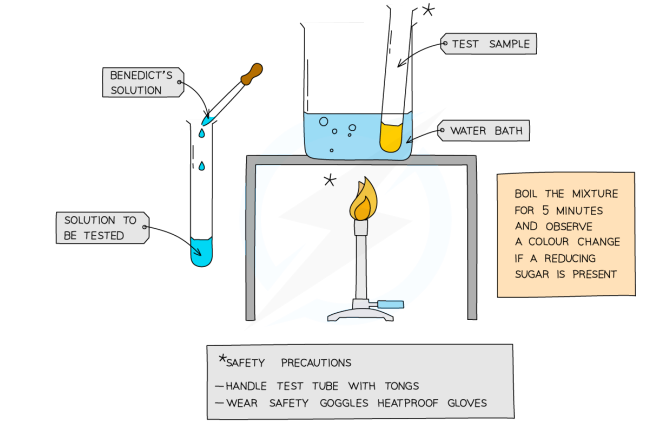Biological Molecules (1c)
1/13
Earn XP
Description and Tags
Unit 2,Structure & Functions in Living Organisms: Part 1, c
Name | Mastery | Learn | Test | Matching | Spaced |
|---|
No study sessions yet.
14 Terms
Types of Biological Molecules
Categories:
Carbohydrates
Proteins
Lipids (fats and oils)
All contain carbon, so are called organic molecules
Molecules and Chemical Elements
Carbohydrates: Carbon, Hydrogen, Oxygen
Proteins: Carbon, Hydrogen, Nitrogen, Oxygen
Lipids: Carbon, Hydrogen, Oxygen
Structure of Carbohydrates
Contain C, H, O
can be small, simple sugars or larger, more complex molecules
monosaccharide: simple sugar, eg, glucose (C6H12O6)
disaccharide: two monosaccharides joined together, eg, maltose = 2 glucose joined together
large polysaccharides: many monosaccharides joined together, eg, starch, glycogen or cellulose = many simple glucose molecules joined together
polysaccharides: insoluble = storage molecules
Structure of Lipids
large molecules made of smaller basic units like glycerol and fatty acids
solid at room temperature (fats) or liquid at room temperature (oils)
Storage of Glucose: Plants vs Animals
plants: starch
animals: glycogen
Structure of Proteins
made of smaller molecules called amino acids
when these are joined, proteins are formed
can be arranged in any order
specific amino acid gives protein its shape
shape determines function
ex: keratin, haemoglobin
Molecule vs Monomer
Carbohydrate : glucose
Lipids: glycerol and fatty acids
Protein: amino acids
Food Samples can be investigated for:
glucose
starch
fat
protein
Preparing a Sample
break up food with a mortar and pestle
dilute with distilled water
stir with a glass rod to mix
filter through filter paper and collect solution
proceed with food tests
OR
use powdered food
Preparing a Sample: Precautions
eye protection
wash splashes quickly
don’t taste food substances
avoid spilling hot water
Test for Glucose
Benedict’s Test
add a few drops of bright blue reagent to the sample
heat in very hot water for 5 mins
observe if there’s a colour change
positive result: blue>green>yellow>orange>brick red (depending on conc.)

Benedict’s Solution: Safety Precautions
wear safety goggles
switch of bunsen burner after water is almost boiling / use water bath
Test for Starch
Iodine Test